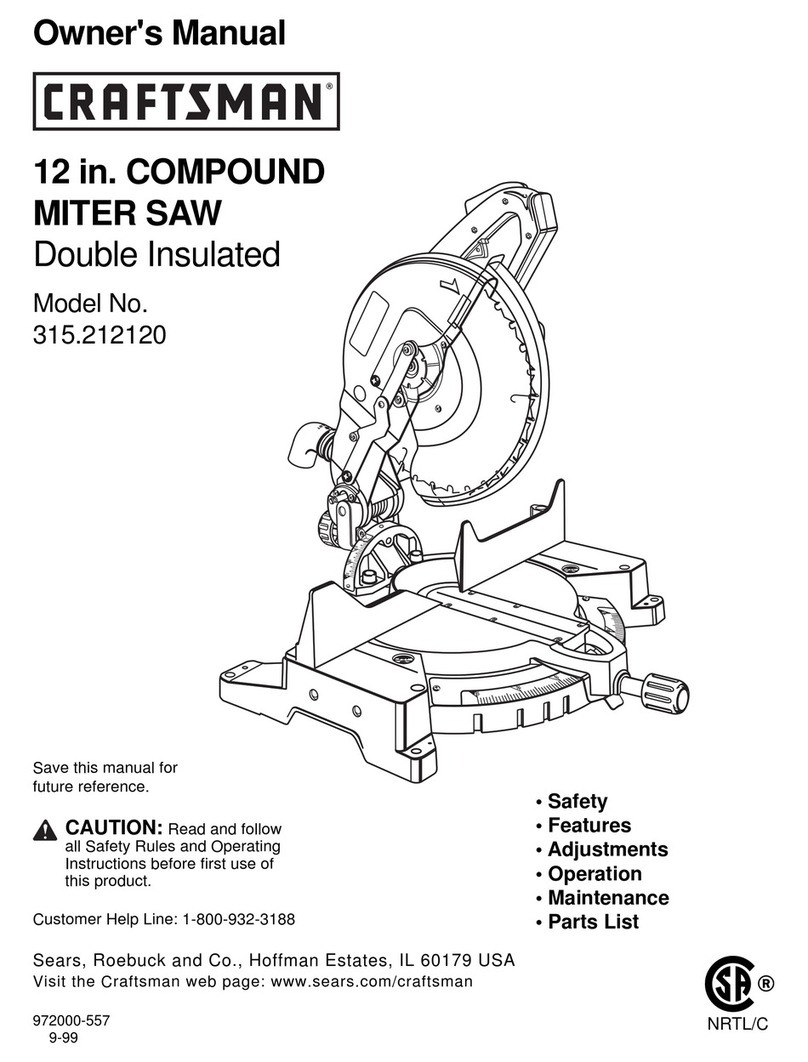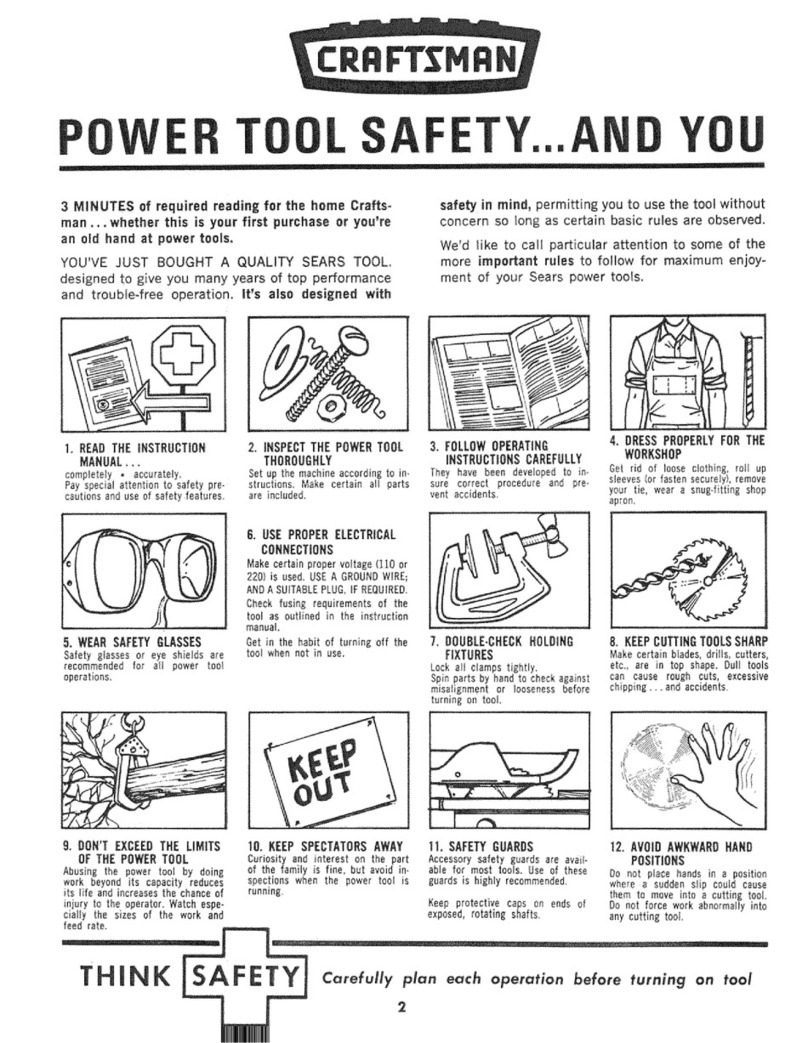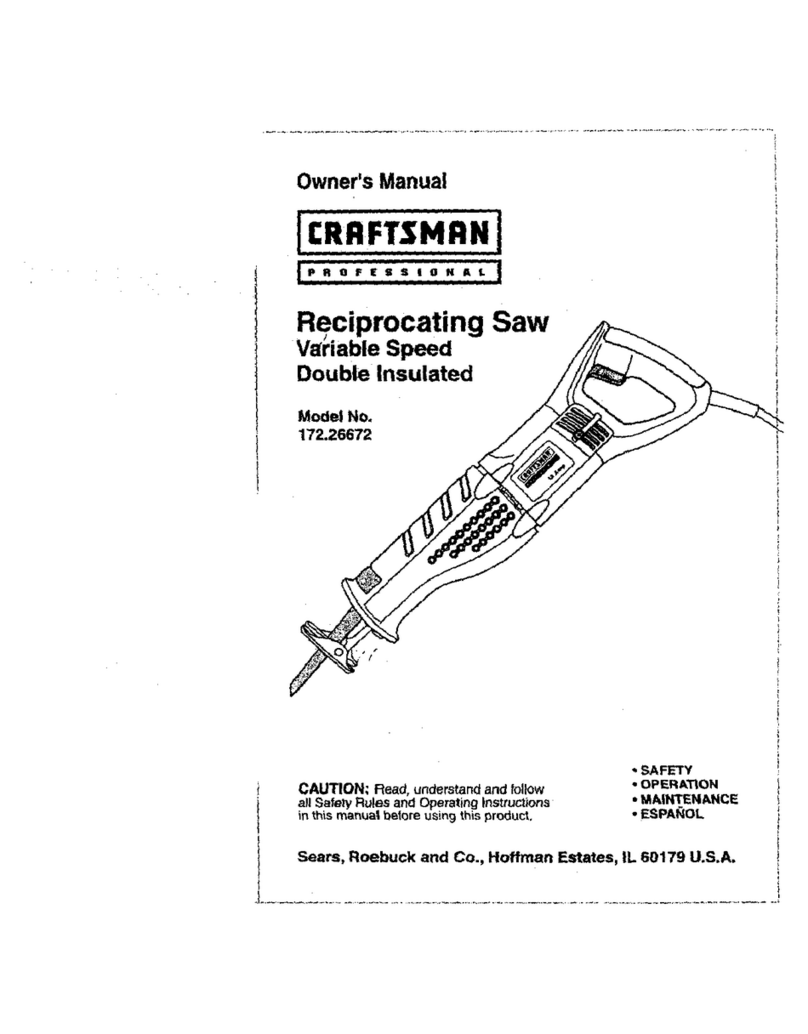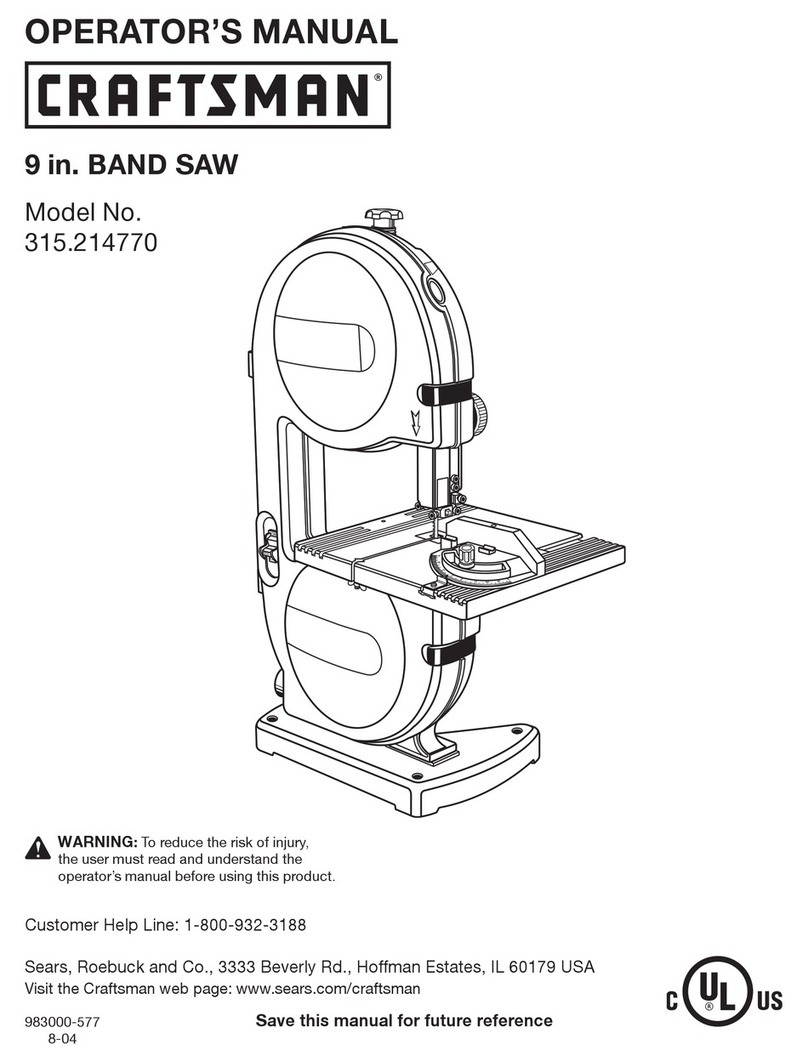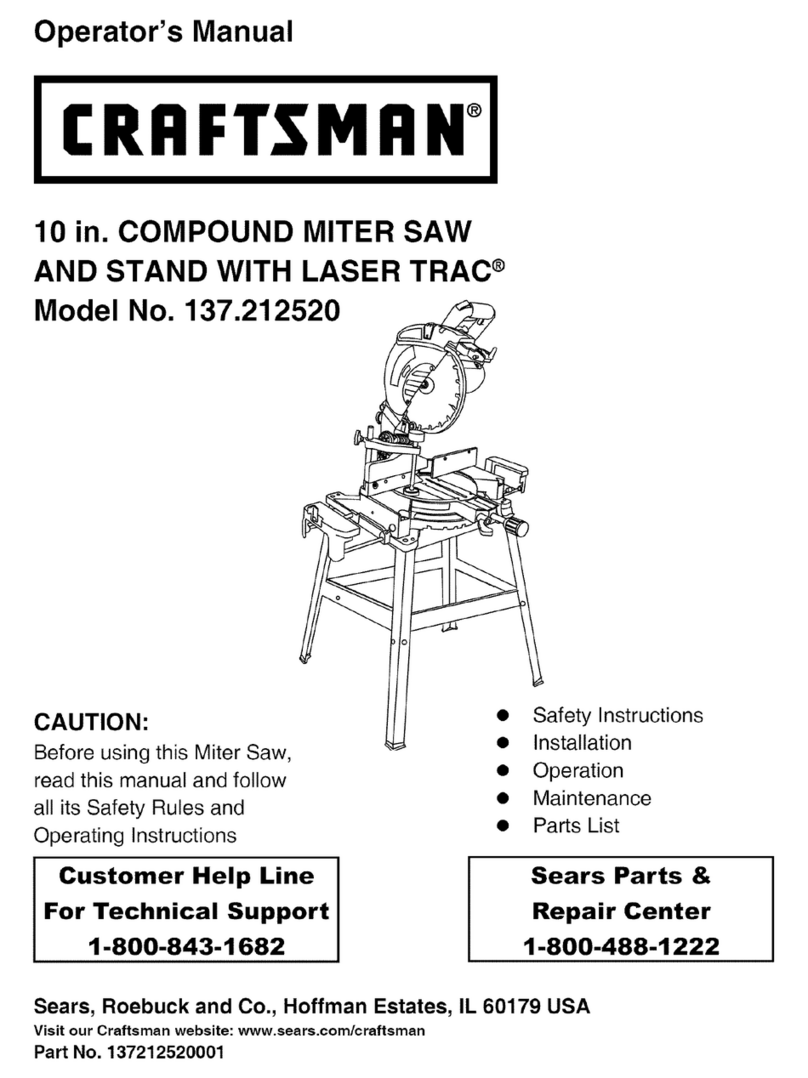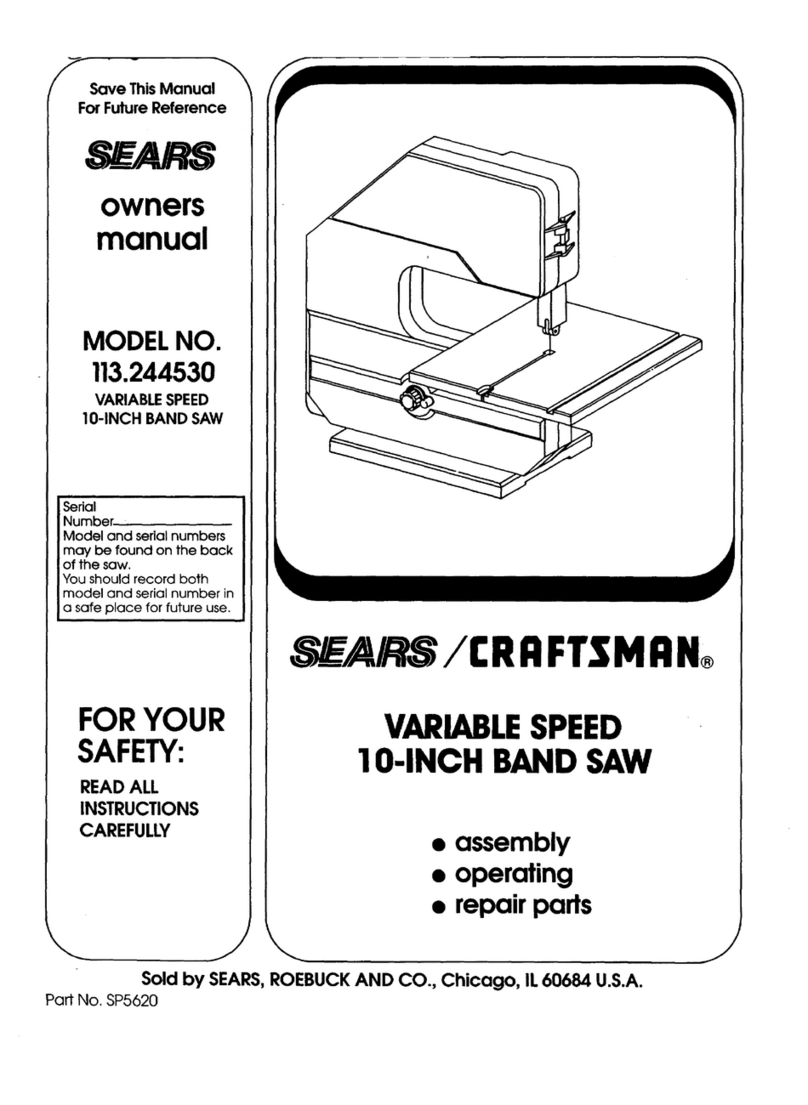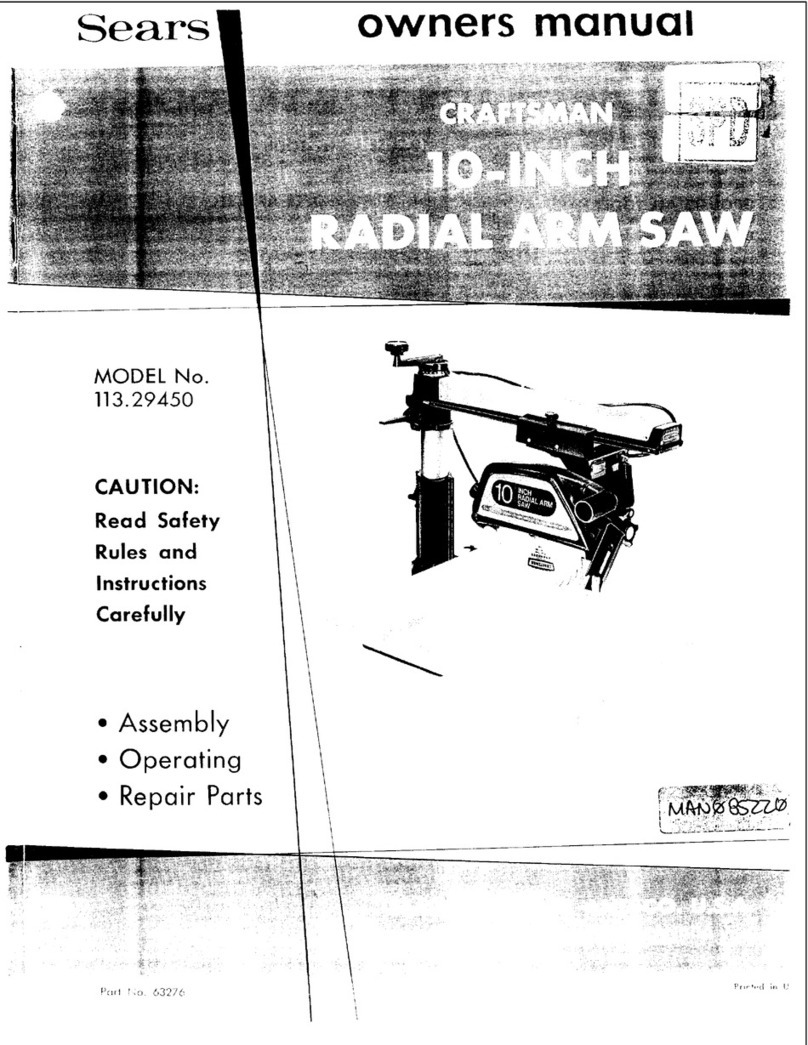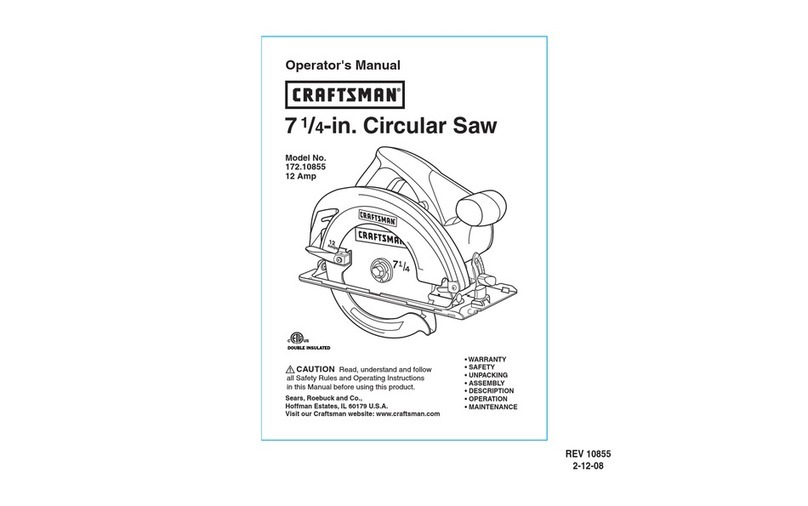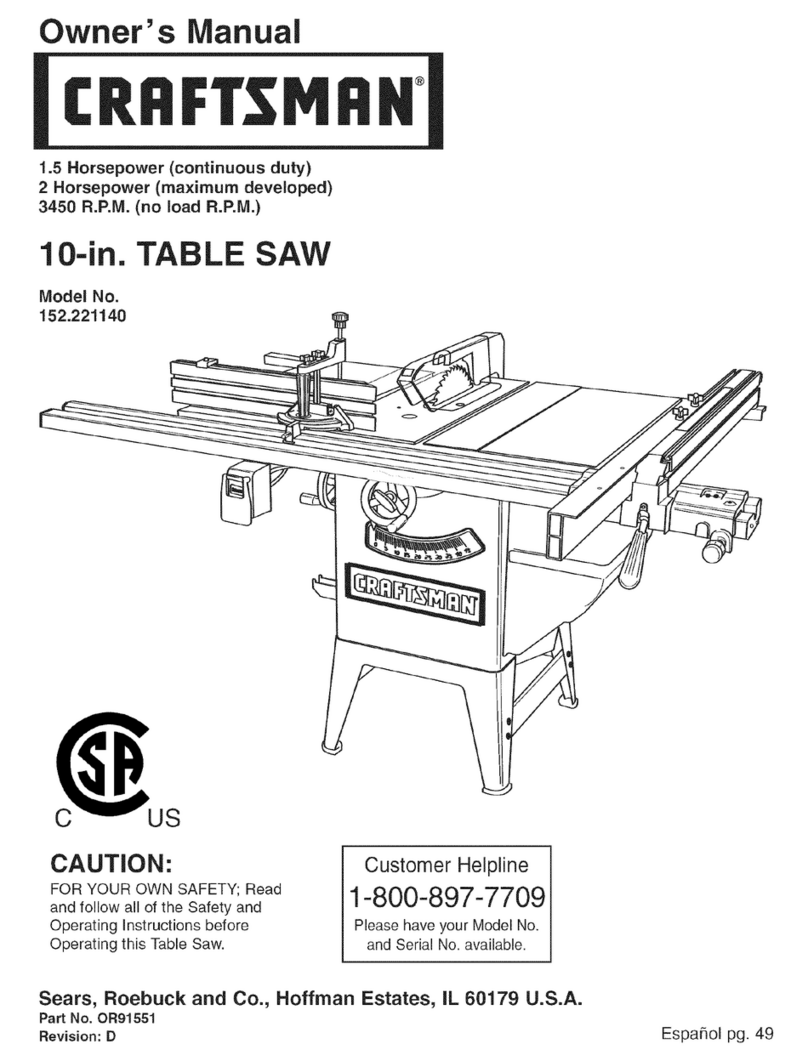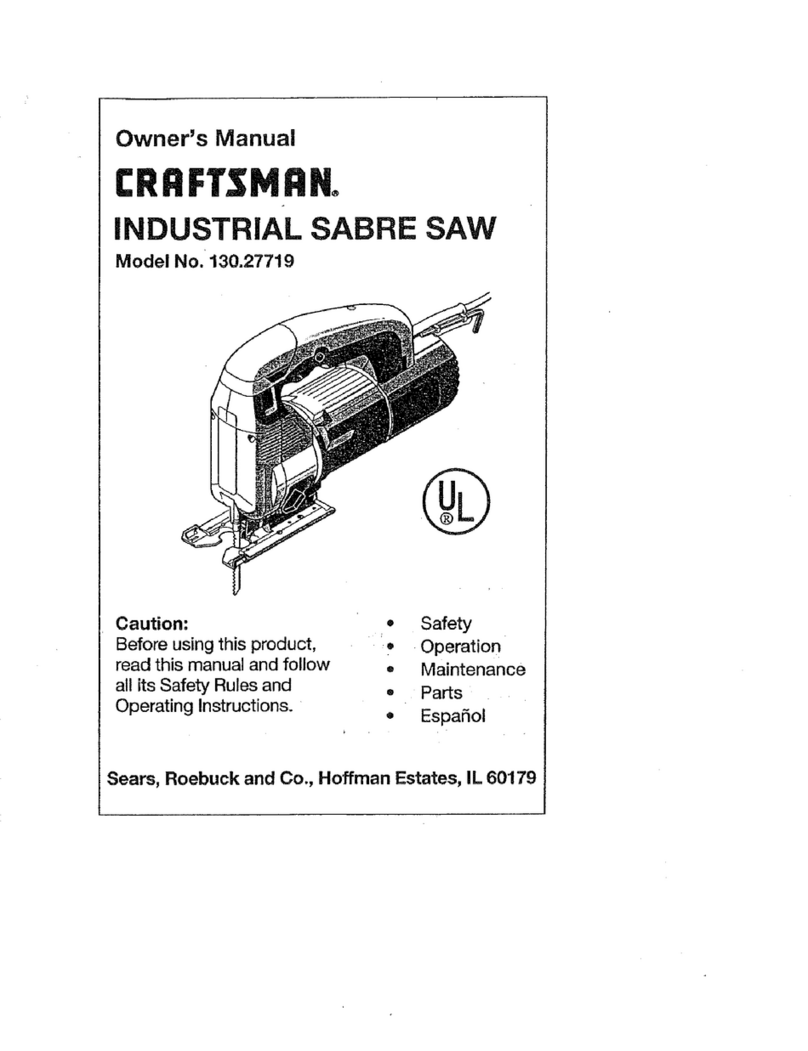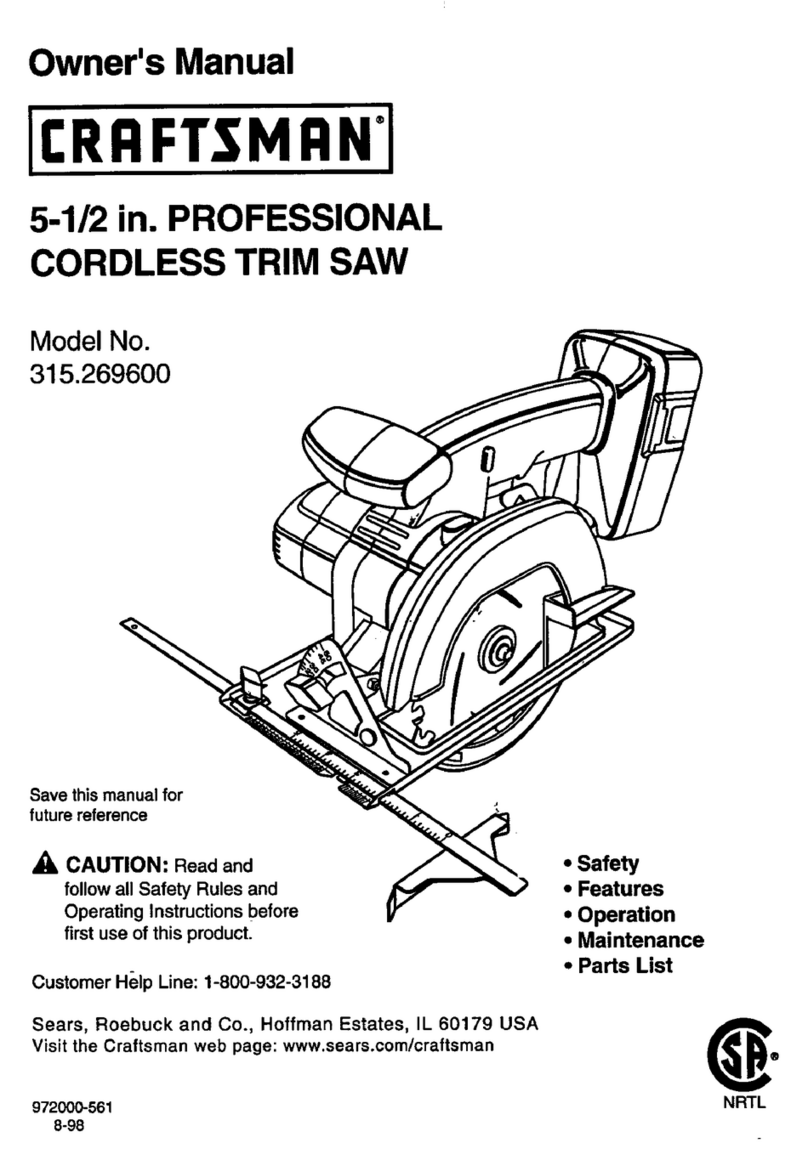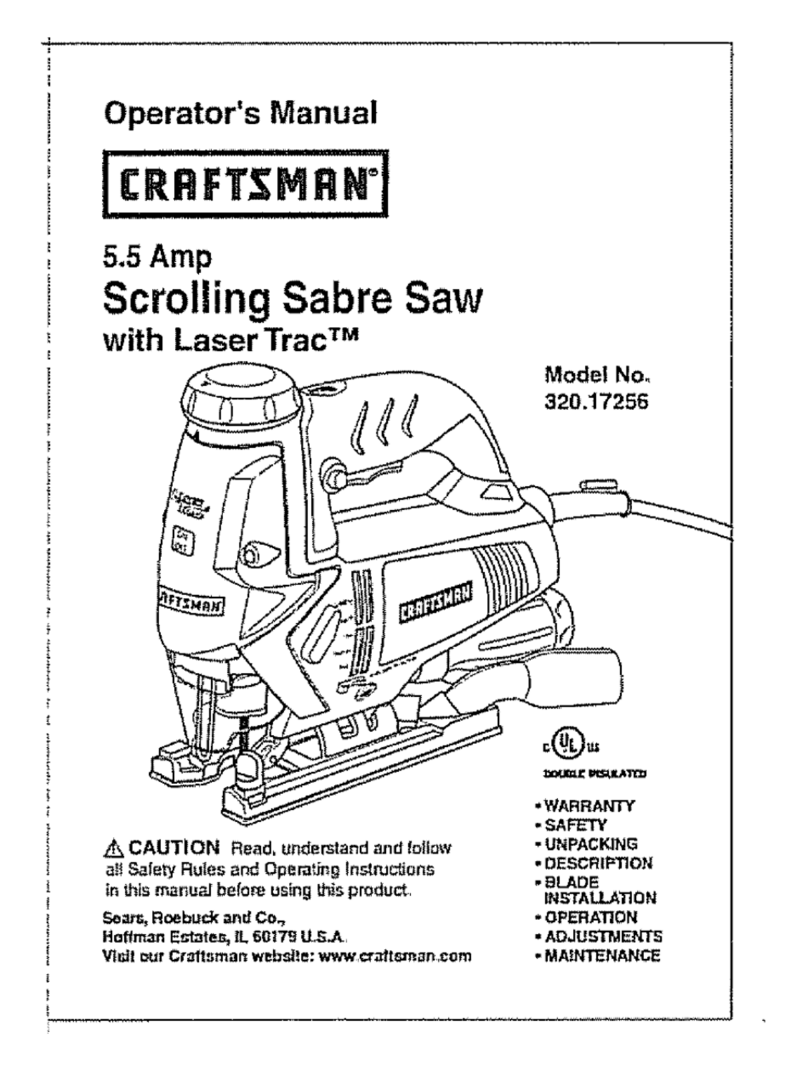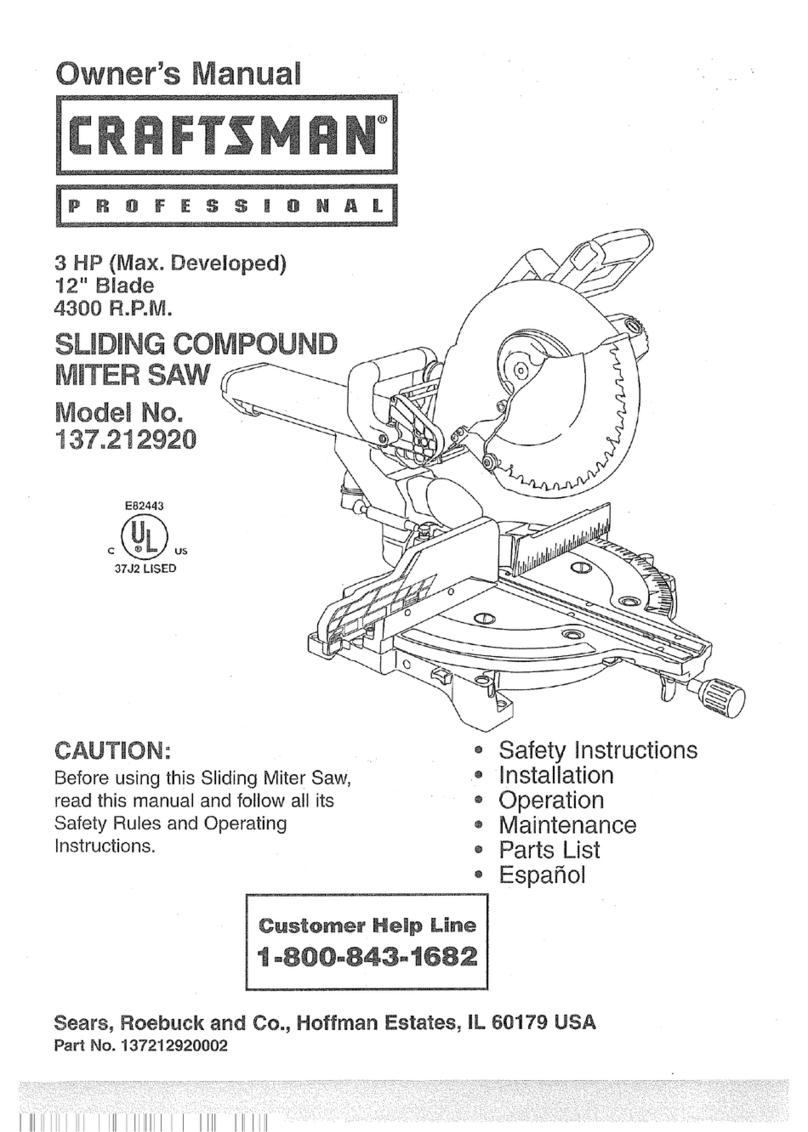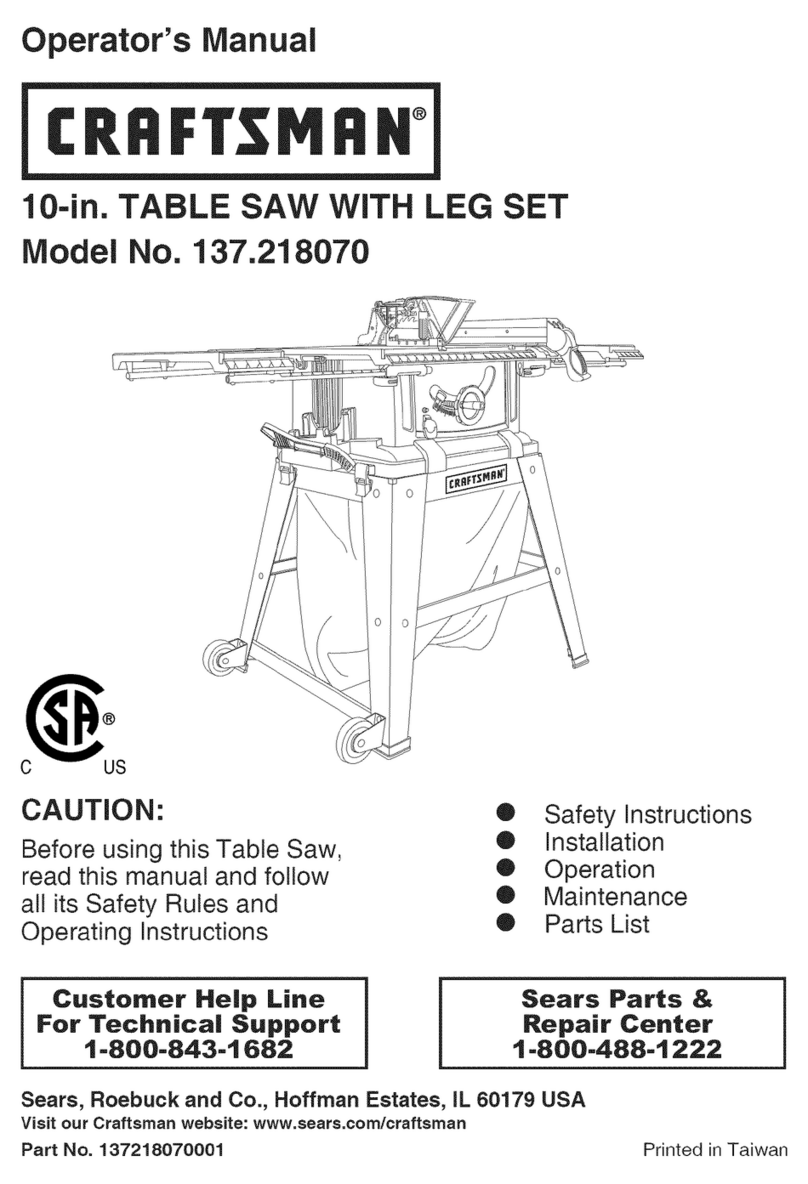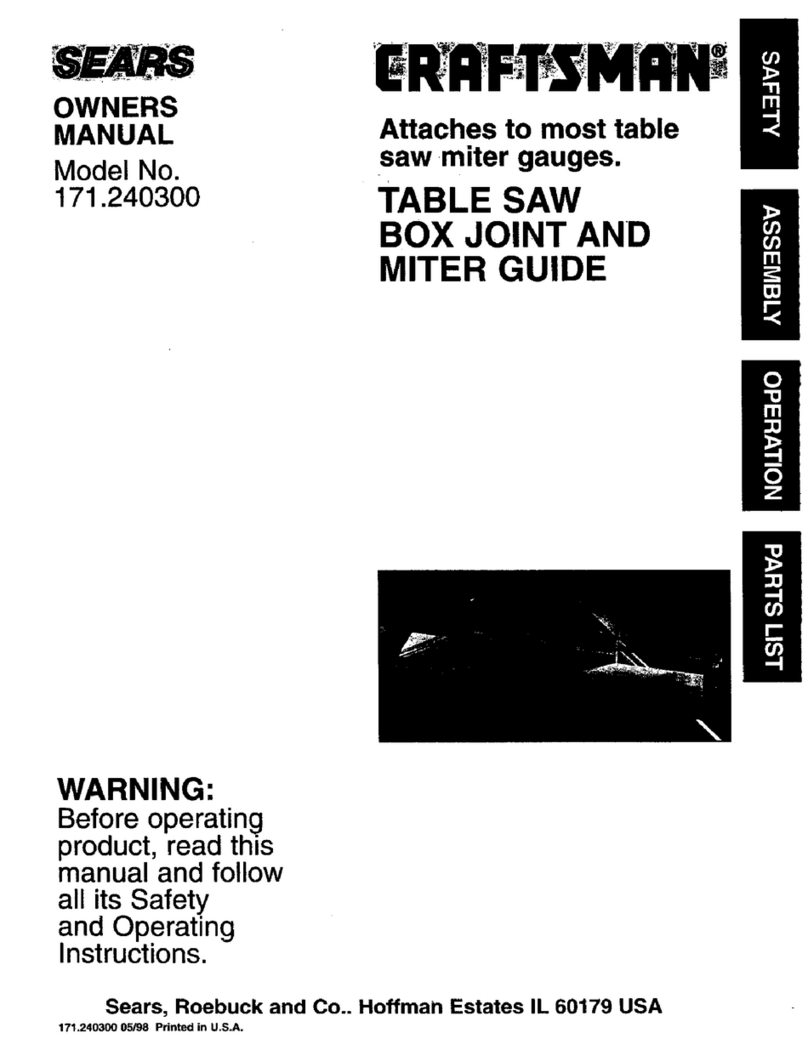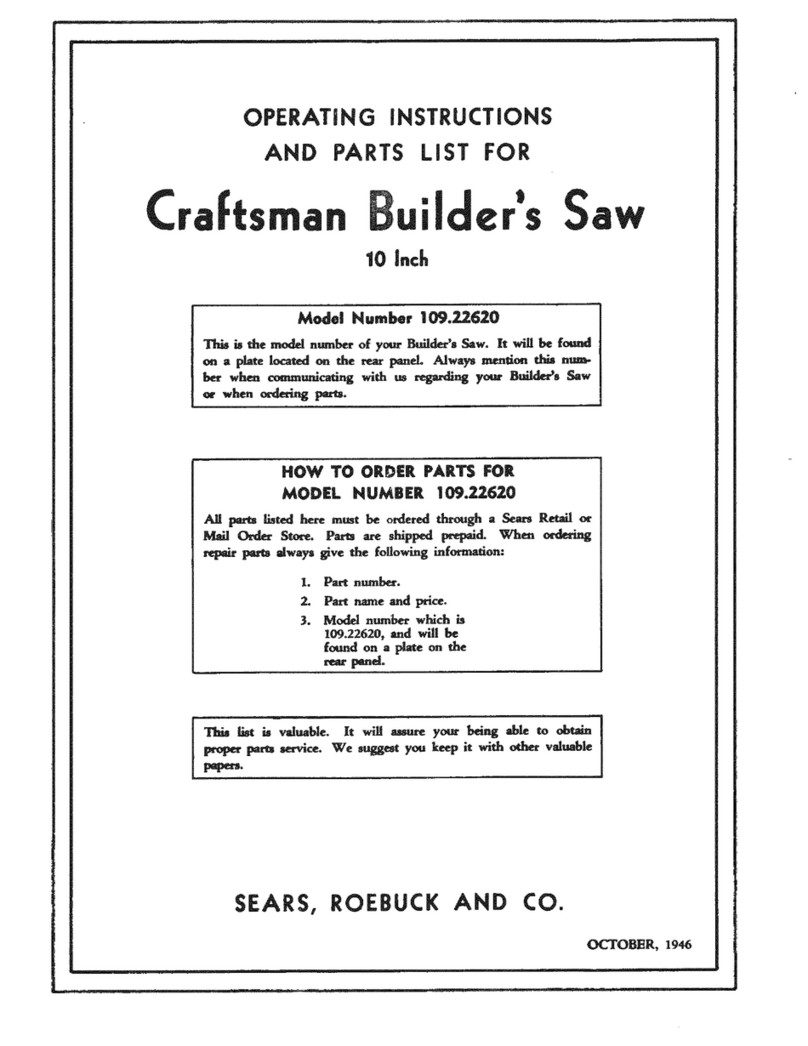TOOLUSE AND CARE SAFETY cont,
m
I/t", WARNING: USE OF ACCESSORIES THAT ARE NOT RECOMMENDED FOR USE ,!
I
I WITH THIS TOOL MAY CREATE A HAZARDOUS CONDITION i
8. ALWAYS use only accessories that are recommended for this tool. Accessories that may
be suitable for one toot may become hazardous when used on another tool.
SERVICE SAFETY
1, If any part of this saw is missing or should break,bend, or fail in any way; or should
any electrical component fail to perform properly: ALWAYS shut off the power switch and
remove the saw plug from the power source and have the missing, damaged or failed part
replaced BEFORE resuming operation
2. Tool service must be performed only at a Sears Service Center. Service or maintenance
performed by unqualified personnel could result in a risk of injury
SAFETY RULES FOR CIRCULAR SAWS
ii ill i
Iz_ DANGER! Keep hands away from cutting area and blade. Keep your second hand i
on the auxiliary handle or motor housing. If both hands are holding the saw, they cannot i
I be cut by the bfade
1. ALWAYS keep your body positioned to either side of the saw blade, but not in line
with the saw blade. Kickback could cause the saw to jump backwards (See Kickback .....
What Causes It and Ways to Prevent It on pages 8-9).
2. DO NOT reach underneath the work. The guard cannot protect you from the blade
beneath the work
3. ALWAYS check lower guard for proper closing BEFORE each use° DO NOT operate
the saw if the lower guard does not move freely and close instantly. Never clamp or
tie the lower guard in the open position° If the saw is accidentally dropped, the lower
guard may be bent Raise the lower guard with the retracting handle Make sure that it moves
freely and does not touch the blade or any other part in all angles and depths of cut.
4. ALWAYS check the operation and condition of the lower guard spring. If the guard
and the spring are not operating properly, they MUST be serviced before use.
The lower guard may operate sluggishly, due to damaged parts, gummy deposits, or a
buildup of debris
5.The lower guard should be retracted manually ONLY for making special cuts, such as
pocket or compound cuts. ALWAYS raise the lower guard by retracting the handle.
As soon as the blade enters the material, the lower guard MUST be released. For all
other sawing, the tower guard should operate automatically
6. ALWAYS make sure that the lower guard is covering the blade BEFORE placing the
saw down on awork bench or floor. An unprotected moving blade will cause the saw to
walk backwards, cutting whatever is in its path Make note of the time it takes for the blade
to stop spinning after the switch is released,
7
